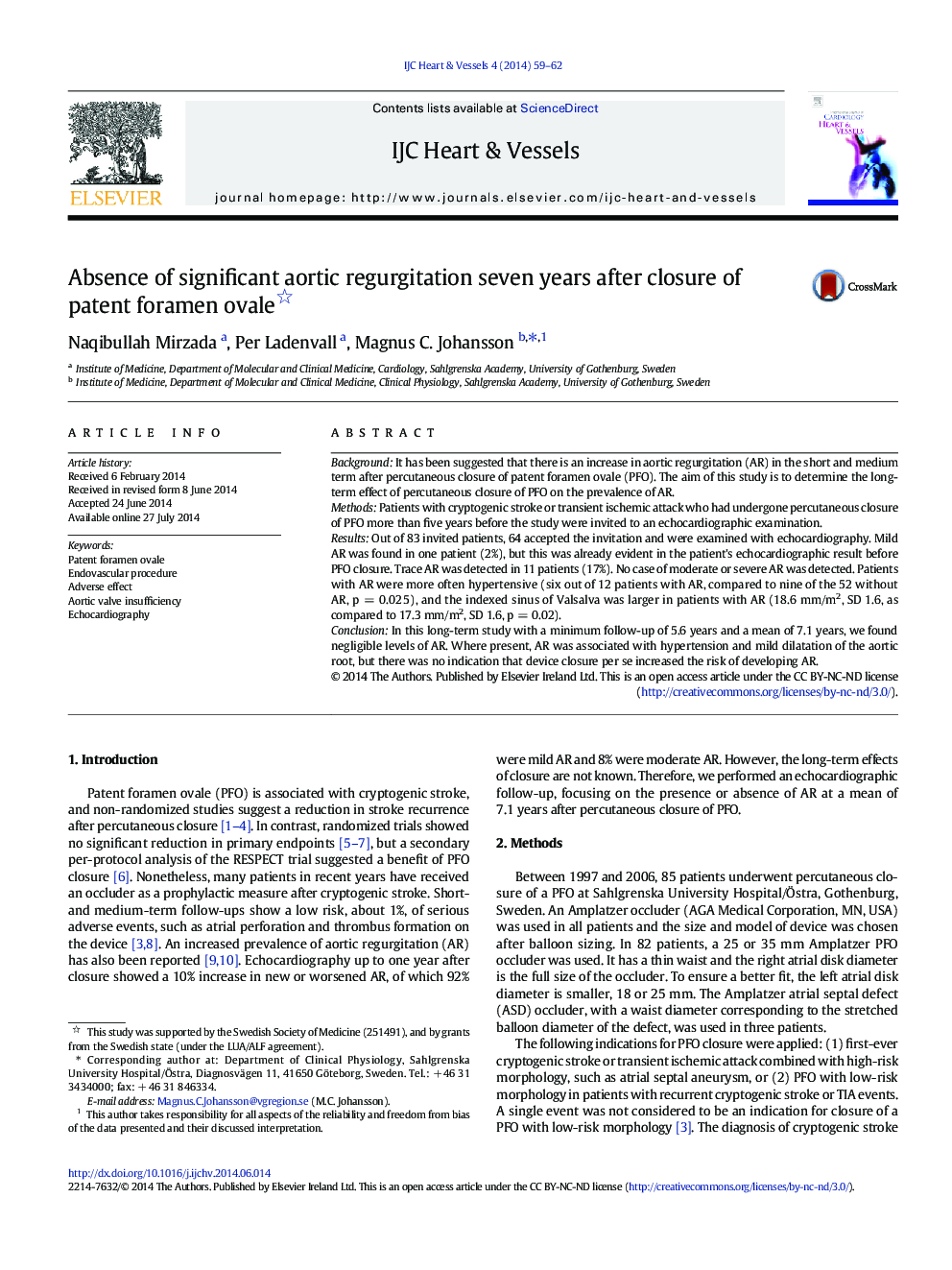| Article ID | Journal | Published Year | Pages | File Type |
|---|---|---|---|---|
| 2927095 | IJC Heart & Vessels | 2014 | 4 Pages |
BackgroundIt has been suggested that there is an increase in aortic regurgitation (AR) in the short and medium term after percutaneous closure of patent foramen ovale (PFO). The aim of this study is to determine the long-term effect of percutaneous closure of PFO on the prevalence of AR.MethodsPatients with cryptogenic stroke or transient ischemic attack who had undergone percutaneous closure of PFO more than five years before the study were invited to an echocardiographic examination.ResultsOut of 83 invited patients, 64 accepted the invitation and were examined with echocardiography. Mild AR was found in one patient (2%), but this was already evident in the patient's echocardiographic result before PFO closure. Trace AR was detected in 11 patients (17%). No case of moderate or severe AR was detected. Patients with AR were more often hypertensive (six out of 12 patients with AR, compared to nine of the 52 without AR, p = 0.025), and the indexed sinus of Valsalva was larger in patients with AR (18.6 mm/m2, SD 1.6, as compared to 17.3 mm/m2, SD 1.6, p = 0.02).ConclusionIn this long-term study with a minimum follow-up of 5.6 years and a mean of 7.1 years, we found negligible levels of AR. Where present, AR was associated with hypertension and mild dilatation of the aortic root, but there was no indication that device closure per se increased the risk of developing AR.
